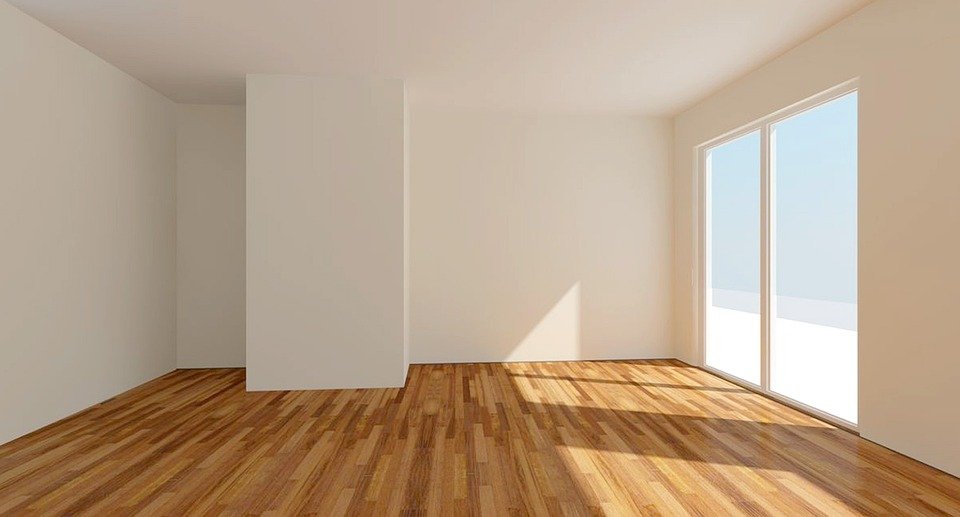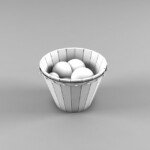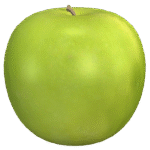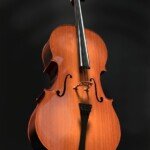Your final mission: Make a legendary ODST helmet with 3D printing
Iconic Orbital Descent Impact Cavalry (ODST) Helmet Halo The universe is more than a headdress; it is a symbol of human toughness and resilience. Its unique, angled profile and tactical visor immediately draw attention. For role players, prop makers and halo enthusiasts, having an ODST bucket is a badge of honor. While replicas can be expensive, 3D printing has democratized the creation process, allowing you to build your own creative process with incredible accuracy. This guide delves into your DIY ODST masterpiece, covering everything from slicing files to final completion, and explores when Professional metal 3D printing It can take your build to the next level.
Mission Plan: Pre-construction phase
Important basic work ensures the task success before starting the printer:
- File collection: Find the perfect model
- Source of good reputation: Search Platform myminifactory,,,,, cults3dor Thingiverse. Find creators who are known for their accuracy and attention to detail. Popular ODST helmets include helmets modeled after design Halo 3: Paragraph 3,,,,, arrivaland unlimited. Pay close attention to model complexity and printability notes.
- File format: Make sure you get the file in a format that is compatible with the slicing software (usually
.stlor.obj).
- Evaluation and Scaling: Suitability is crucial
- Measure twice, print once: Accurately measure your head circumference and height (chim to crown). Don’t guess!
- Scale in slicer: Open the main helmet shell file in the slicing software (Cura, Prusaslicer, etc.). Scaling the model proportionally using your measurements. Always print a small test piece first (shuo section) Verify scale and fit before conducting a complete resource-intensive print. Remember to consider the filling thickness.
- Print preparation: Slicing is important
- Slice wisely: Break the helmet into parts for most desktop printers (shells, visors, chin straps, earrings, ventilation covers, etc.). Vertical splitting is usually the easiest, and masking the seams are better.
- direction: Orient the parts to minimize overhangs that need to be supported. The helmet shell is usually on the dome side. Use the support of trees where possible – they are usually easier to remove from complex curves.
- Key Settings (PLA Example):
- Layer height: 0.15mm -0.20mm, detailed and speed balance.
- Fill density: 15-25% (can or cubic mode to provide good strength weight). Increase gradually near key attachments.
- Wall (perimeter): 3-5 structural integrity, especially the walls of the shell.
- support: Generate the required places at a reasonable density (approximately 15-20%) and distance from the model (0.2mm).
- Edge/raft: It is highly recommended to prevent warping on large parts such as shells. Rafts may be needed in difficult beds.
- Material: PLA is beginner friendly. PETG provides better heat resistance and toughness. ASA/ABS provides high heat resistance and high toughness, but requires a closed printer and careful handling. For demanding applications, nylon using fiberglass (such as PA6-GF) offers excellent strength and durability, close to metal-like properties.
Task execution: Printing phase
- Prepare: Make sure your printing surface is impeccable and level. Fully preheat the bed. Check the filament path and spool freedom.
- Monitoring and Maintenance: Large helmet parts benefit from an aggressively heated housing (even for PLA/PETG) to prevent warping or separation. Check the print regularly, especially during the first few layers and long overhangs.
- Patience is the key: High resolution ODST helmet printing is easy to use How many days For all parts. It takes time to allow it – schedule it properly (avoid power outages if possible!).
Post-processing: From rough printing to smooth operators
This stage converts the original print into polishing props:
- Demolition and Cleanup: Be careful to remove the support. Use a rinse cutting machine, a hobby knife and specialized support removal tools. Grinding (starting from rough ~80-120 grit and moving to 240-400 grain size) is essential for smoothing the laminar lines and supporting scars. Wet grinding Can help manage dust, especially with PLA.
- assembly: Drying all parts before glueing. Use Superglue (CA glue) or epoxy for a firm bond. Strengthen key internal joints with epoxy putty like Milliput. Thoroughly secure the visor assembly as it usually holds the visor in place.
- Fill and polish: Fill layers, seams and minor defects. Options include:
- Filling primer: Hide minor flaws.
- Bondo Spot Putty: Suitable for small blanks.
- Epoxy resin greasy: Great for larger gaps and carvings.
- Carefully restored to smooth perfection through gradually fine grit (up to 600-800 grain size).
- Sun visor integration: The heart of the helmet
- Material: Vacuated PETG plastics are ideal. Alternatives include smoking motorcycle visors, welded shields or coated acrylic panels.
- Cutting and Shaping: Cut carefully using an acrylic scoring knife, dremel or laser cutting machine. Wear eyes to protect! Polish edges are smooth.
- Install: Typically, the sun visor is sandwiched between the helmet shell and the sun visor/decoration piece. Use foam tape or neoprene strips to cushion and seal the visor.
- Coloring: Used for external. Or, look for pre-engraved or dual-lens "One-way vision" Acrylic fiber. For excellent optical clarity, impact resistance and perfectly molded curvature, professionally formed polycarbonate visors are the gold standard.
Internal comfort and final touch
- filling: Strategically placed on comfortable fabrics (usually black velvet or hygroscopic underarm fabric) covered with EVA foam. Focus on the pressure points occurring in the crown, forehead, temple and the back of the head. Test the thickness so that the helmet feels safe but does not swing to give it a perfect fit. Fill with Velcro or contact cement.
- Strap: Install a reliable chin strap system. Nylon webbing and robust buckles (such as parachute clips) are common. Make sure you can easily secure and release the helmet.
- painting: income
- Primer: Use a high build fill primer as the final foundation. Light sanding highlights low points that require more filling. Rattle job; HVLP spray gun is even better.
- Primer: Apply the main color (ODST is usually matte black/dark gray). Apply in several layers of light jackets.
- weathering: This sells realism. Technology includes:
- Dry brush: Lighter grey/edges and corners to simulate wear.
- washing: Thin dark paint (paint or acrylic washing) sinks into the gap.
- chip: Use a sponge or fine brush with silver/gray to mimic paint damage.
- spray gun: For subtle gradients such as accumulated dirt.
- Decals and details: Add any unit patches, symbols, or warning decals. Seal everything with the final Frosted or satin sheer jacket Protect your work.
Conclusion: Mission completed
Creating your own ODST helmet through 3D printing is a very rewarding journey. It tests your patience, planning and manufacturing skills, but the result is an unparalleled piece of personalized halo legend or complete role-playing. Remember that success depends on meticulous preparation, patient execution and thorough post-processing. From precise scaling and slicing to finishing, every step is built toward your ultimate goal.
Consider integrating precision metal 3D printing components when the project requires high-quality strength, heat resistance, detail or overly realistic weight. Key elements can be manufactured with excellent accuracy and durability using DMLS or SLM (such as SLM) techniques, such as robust internal hinges of the sunshade mechanism, enhanced structural reinforcement brackets, authentic metal vents and even custom bolt heads. These materials take your props beyond the functional artifacts in the field of clothing and can withstand rigorous extensive use and display.
Whether it’s printing on a desktop printer or enhanced with professional metal manufacturing, your DIY ODST helmet is a testament to your dedication. Suitable, helljumper!
DIY ODST Helmet: FAQ (FAQ)
-
Can I make one Function ODST helmet for this guide?
- Although this guide produces highly realistic role-playing props, it is to be achieved Real The ballistic/respiratory system is very complex, dangerous and not recommended. Focus on excellent aesthetics and wear resistance. Any attempt to integrate electronic devices (antennas, lighting, HUD displays) should determine safety within cosmetic restrictions (low voltage wiring, lithium battery safety protocol).
-
My warping on the helmet shell is awful! what can I do?
- Warp Plague big print. Strengthen your defense: Ensure a perfectly clean level bed. Increase the bed temperature slightly (do not exceed material limits). Use width edge (10-20mm) or severe distortion is required raft. one Enclosed printer room Keeping heat is crucial. If using ABS/ASA, a higher ambient temperature must be used. On the contrary, too many bed The heat caused by the elephant’s feet will also distort the thin walls; gradually adjust the settings. Preheating the bed for a longer period of time before starting can help you.
-
How long does the entire printing process take?
- This is highly variable. Expected How many days Total printing time. The main case alone may take 24-72+ hours, depending on size, layer height, filling and printer speed. Smaller parts (chin, ventilation holes, ear plates) add more time. Consider a lot of post-processing time (sanding, filling, painting) – easy to match or exceed printing time.
-
Can I skip the visor formation and buy one?
- Absolutely! Many role-playing vendors sell prefabricated replacement motorcycle-style sun visors that only require trim. Specially search for ODST replacement visors. You can sometimes use a modified welded helmet lens. Professional polycarbonate formation Provides final accuracy and optical clarity if budget allows. They understand the exact curvature required for a particular helmet model.
-
My PLA helmet feels a little fragile. Are there any upgrade skills?
- Filling and walls: First, make sure enough filler (at least 15-20%, capacity/cubic) and wall/circumference number (at least 3, better 4-5). Material upgrade: Switch to a stronger material to supply critical parts. Compared with PLA, PET has a greater impact. ASA/ABS provides greater toughness and heat resistance. Structural enhancement: Strategically apply epoxy or strong epoxy inside to critical stress points and joint areas. Metal Fusion: For permanent, lightweight strength in high pressure areas (hinges, accessory lugs), Precision metal 3D printed inserts Made of titanium or aluminum alloy, unrivalled durability completely hidden within the structure.
- What are the most important steps to complete?
- Grind. There is no substitute for diligence. After careful filling, the perfect painting requires a perfect smooth surface with progressive sandpaper. Skip or rush to fill/sand directly convert to visible defects under primer and paint. Prepare to sand again, fill and sand! Multiple starts between the two are key to the exhibition quality finish. The foundation determines the upper level.


















